- Program TogglePrograms Programs
HUMBER
- Quick Link ToggleQuick Links Quick Links
- Alerts
- Book a Tour
- Info for ToggleInfo for Info for
- Search
In honouring the land, we are walking in the moccasin tracks of our ancestors and leaving our footprints for the future generations to come.
Humber College is located in Adoobiigok, known as "Place of the Alders" in Anishinaabemowin, the Ojibwe language.
It is uniquely situated along GabeKanang Ziibi, the Humber River providing an integral connection for Indigenous peoples between the northern shore of Lake Ontario and the Lake Simcoe Georgian Bay region.
Humber's Indigenous Cultural Markers at its North and Lakeshore campuses are designed to place the college in the context of the long history of Indigenous peoples in what is now called the Greater Toronto Area.
The Team
Ryan Gorrie—Architect, Design Co-Lead, Project Manager (Anishinaabe)
David Thomas—Intern Architect, Design Co-Lead (Anishinaabe)
Larissa Roque—Intern Architect, Designer (Anishinaabe)
Danielle Desjarlais—Designer (Cree)
Tiffany Creyke—Designer (Tahltan)
Andrea Mantin—Exhibit Designer, Project Manager, Landscape Architect (Acadian)
Humber’s Indigenous Cultural Markers are currently being displayed as part of Ryan Gorrie’s participation in UNCEDED: Voices of the Land, a showcase of Indigenous architects from Turtle Island (Canada and the USA) at the 2018 Venice Biennale of Architecture.
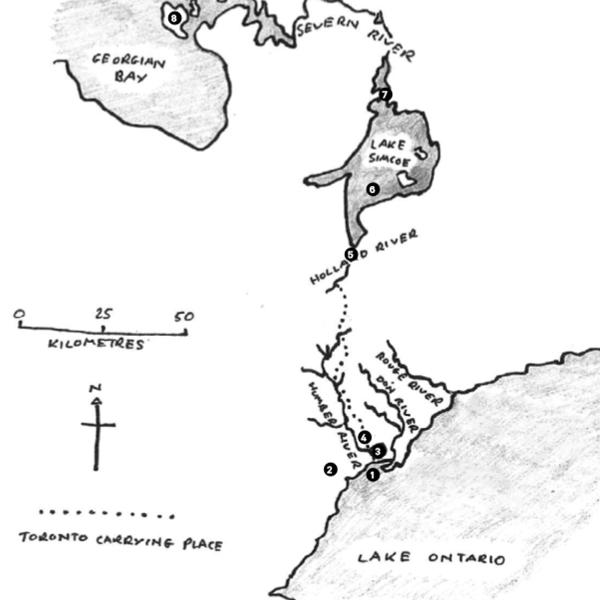
An installation at the Barrett Centre for Technology Innovation at North Campus will represent the 7 Fires of Creation that correlate with the 7 Stages of Life as told within the story of the Ansihinaabe Life Path.
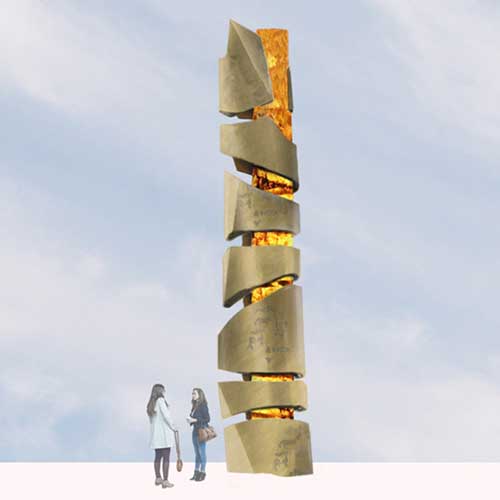
The Anishinaabe path of life tells us of our creation, journey, and destination. We are all given gifts when we enter this world that and its ours to choose how we develop and share those gifts.
The main sculpture is a representation of our entire life and the central piece that links this life is symbolic of the spirit. The piece features lighting within that is programmable to be infinitely curated for events, teachings or to mark seasonal shifts like the solstice or equinox. Parameters like color, speed and intensity are all variables.
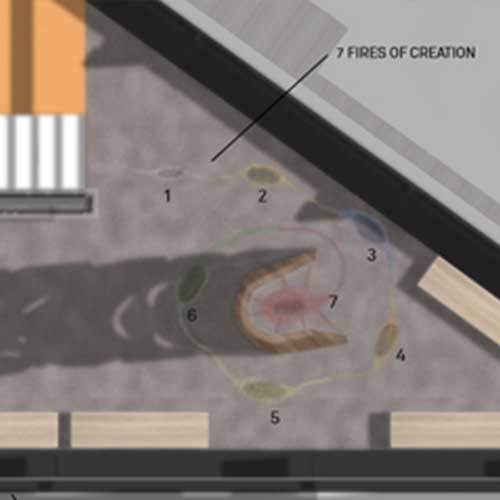
The 7 fires of creation come before we as human beings entered the world:
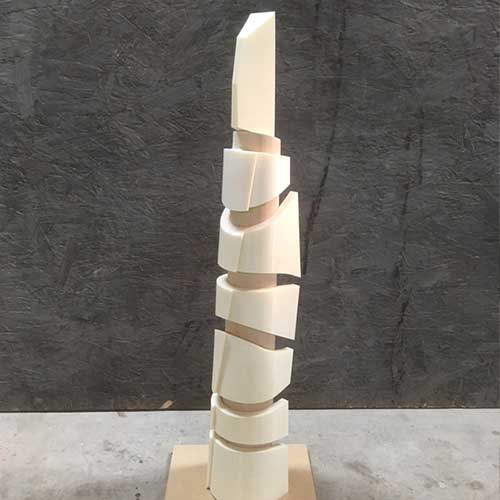
The Path of Life Teaching takes us back to the beginning of the road – our path that was given to us by the Creator. The 7 Stages of Life are:
Heading the Prophecies of what was to come, the Anishinaabe Nations who resided on the Eastern shores of Turtle Island, left their homelands to make a "Great Migration" following the waterways "flowing from the West."
The place of origin on the East Coast was known as "Chi-Ahkee" (The Big Earth or the Great Land). The people who remained behind "to keep the Eastern fire burning" became known as "Waubunahkeeyug (people of the Dawnland)."
It was said they followed the "Sacred Shell" who led them along the St. Lawrence River, through the Great Lakes, completing the migration at the Western end of Ojibwe Gitchi-Gameh (today's Lake Superior) where they found the "food that grows on water" (wild rice). Through the course of their journey, which took many generations, they stopped seven times – these becoming known as "the seven major stopping places."
The Migration of the Anishinaabe displays several key stopping points along that journey starting from the east coast to Manido Maniss.
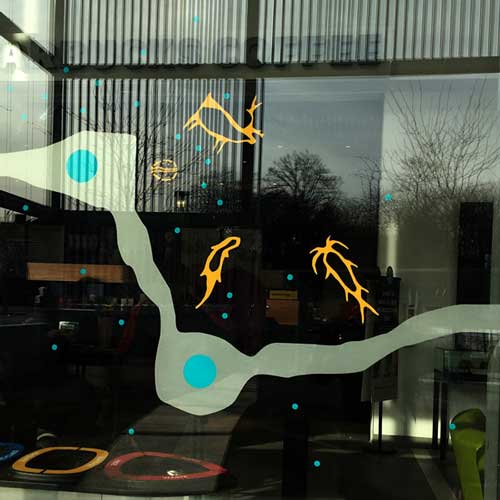
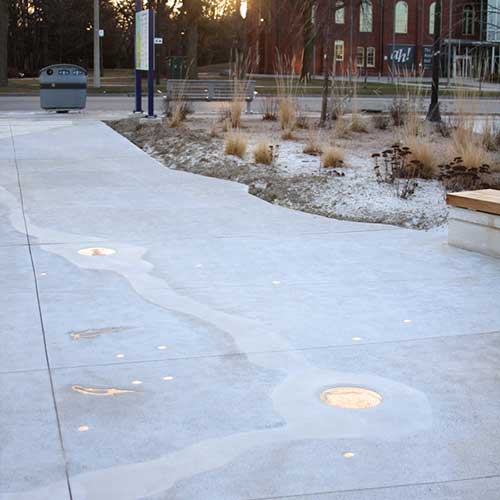
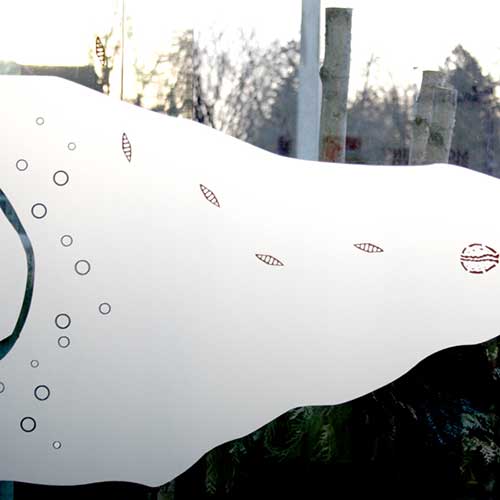
This trail has 8 stops along the way to represent different areas of the migration as well as to explain the original names of the areas.
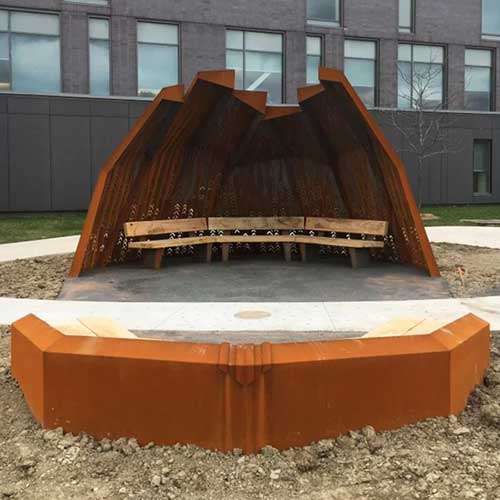
Gabekanaang-ziibi "leave the canoes and go back"
Gabekanaang-ziibi refers to the Mouth of the Humber River at Lake Ontario. Currently, the area is characterized by natural marshland shoreline and a low beach that would have acted as a landing space for canoes since the banks are too high and muddy upstream.
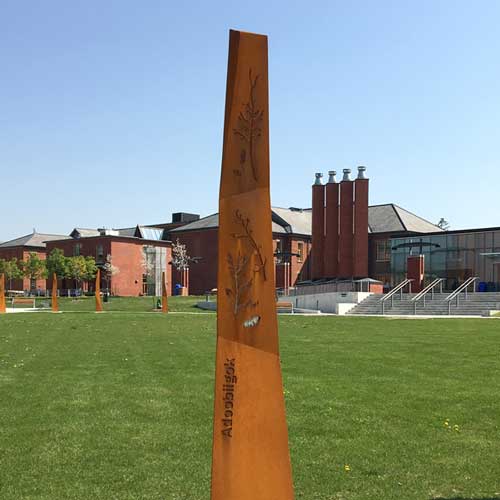
Adoobiigok "place of the alders"
The name "Etobicoke" originates with the Mississauga First Nation, who called Etobicoke Creek and the area around it "Adoobiigok," meaning "where the alders grow." Over time, the word was gradually corrupted and anglicized into "atokecoake" and finally "Etobicoke."

Tuhbenahneequay
On the high east bank of the river, Riverside Drive traces the path of the ancient Toronto Carrying Place Trail. Large oak trees, remnants from the time of the Carrying Place, still stand along the drive. One hundred and fifty of these trees were inventoried by municipally proclaimed as the "Tuhbenahneequay Ancient Grove."

Ishpaadina "high hill" or "a high place"

Gete Onigaming "the carrying place trail"
(Ancient Carrying Place Trail) - Holland River/Marsh
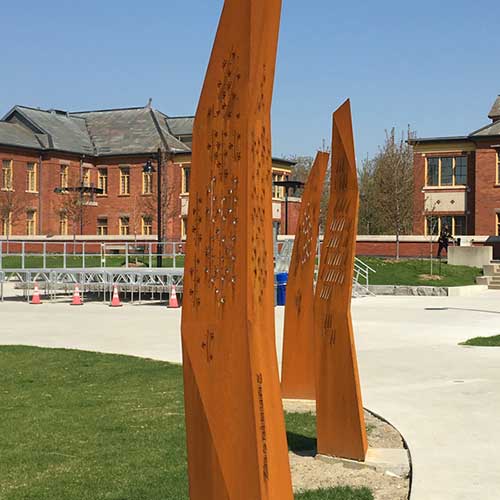
Zhoniaung "place of the silvery waters"
(Place of the Silver Waters/Cold Water) - Lake Simcoe.
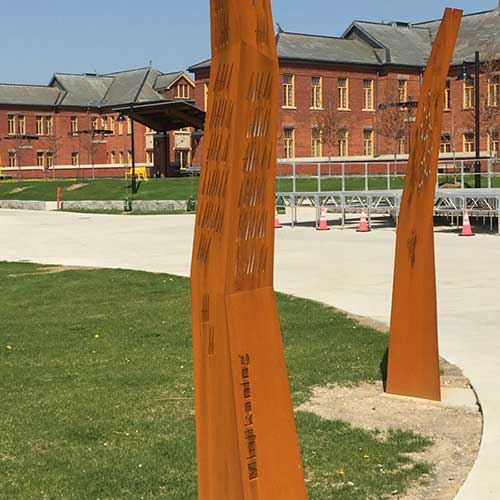
Minjikaning "place of the Great Fence"
Atherley Narrows referring to the Ancient Fishing Weirs at the rapids between Lake Couchiching and Lake Simcoe.

Chimnissing "big island"
Beausoleil First Nation / Christian Island